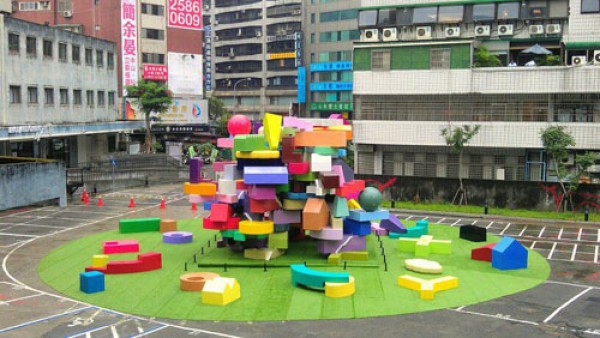The Vertical Village
by MVRDV and The Why Factory
Chung Shan Creative Hub
Taipei
8th of October – 8th of January 2012
Si può immaginare un diverso modello di sviluppo per le città asiatiche?
Quali caratteristiche architettoniche riescono a rispondere alla necessità di mantenere dei bassi costi di produzione e di conciliare la densificazione con la qualità?
A queste domande tentano di rispondere MVRDV in collaborazione con The Why Factory con la mostra “The Vertical Village”.
L’installazione che apre la mostra ne declina perfettamente i contenuti:
un modello abitativo alto 6 metri che, composto da unità abitative diverse nella forma e nelle caratteristiche distributive, si basa sulla flessibilità e sulla differenziazione: un villaggio, ma dallo sviluppo verticale.
Il catalogo in lingua inglese della mostra, che raccoglierà una serie di casi studio sviluppati per Tokyo, Beijing, Shanghai, Taipei, Djakarta, Seoul e Bangkok, oltre a una serie di interviste agli abitanti di Taipei, verrà pubblicato a gennaio del 2012.
GLR
«Under the title “The Vertical Village” the exhibition explores the rapid urban transformation in East Asia, the qualities of urban villages and the potential to realize this in a much denser, vertical way as a radical alternative to the identical block architecture with standard apartments and its consequences for the city. The exhibition consists of analytical research, a grid of models, various movies, a documentary and animations, two software packages and a 6 meter tall installation of a possible Vertical Village developed by MVRDV and The Why Factory. Visitors can design their ideal house and compose their own Vertical Village with parametric software. The exhibition is located in Chung Shan Creative Hub, Taipei and open from 8th of October to 8th of January 2012.
The pressure on the East Asian cities has lead to an increasing urbanization and densification during the last decades. It has made way for the construction of giant buildings, mostly towers, blocks and slabs. A ‘Block Attack’ that gradually replaces and scrapes away the more traditional low rise, small scale, often ‘lighter’ types of architecture and urbanism: the Hutong in Beijing, the small wooden houses in Tokyo, the villages in Singapore, the individual houses in Taipei and other East Asian cities. These urban villages form mostly intense and socially highly connected communities, with enormous individual identities and differentiations. One can speak of urban ecologies, communities that have evolved over the course of centuries. Their faceless replacements packed with identical apartment units offer a Western standard of living at an affordable price, but at the expense of differentiation, flexibility and individual expression.
Is there an alternative to this process? Can one imagine a new model for the development of East Asian cities? Can these areas be densified in such a way that the qualities of the traditional village are preserved? The exhibition offers an alternative, a contemporary Vertical Village – a three-dimensional community that brings personal freedom, diversity, flexibility and neighbourhood life back into East Asian – and maybe even Western – cities.»
–
–
–

